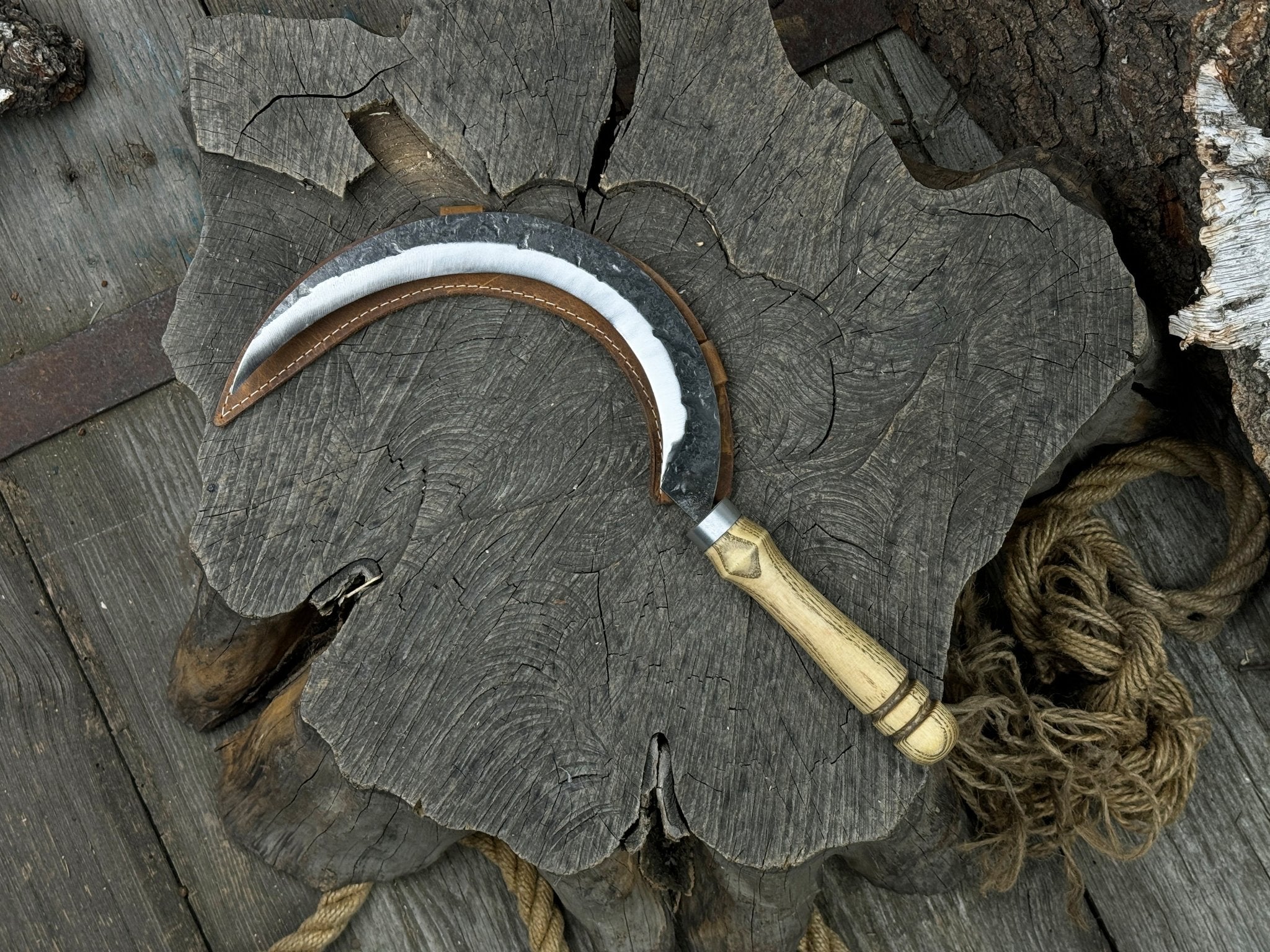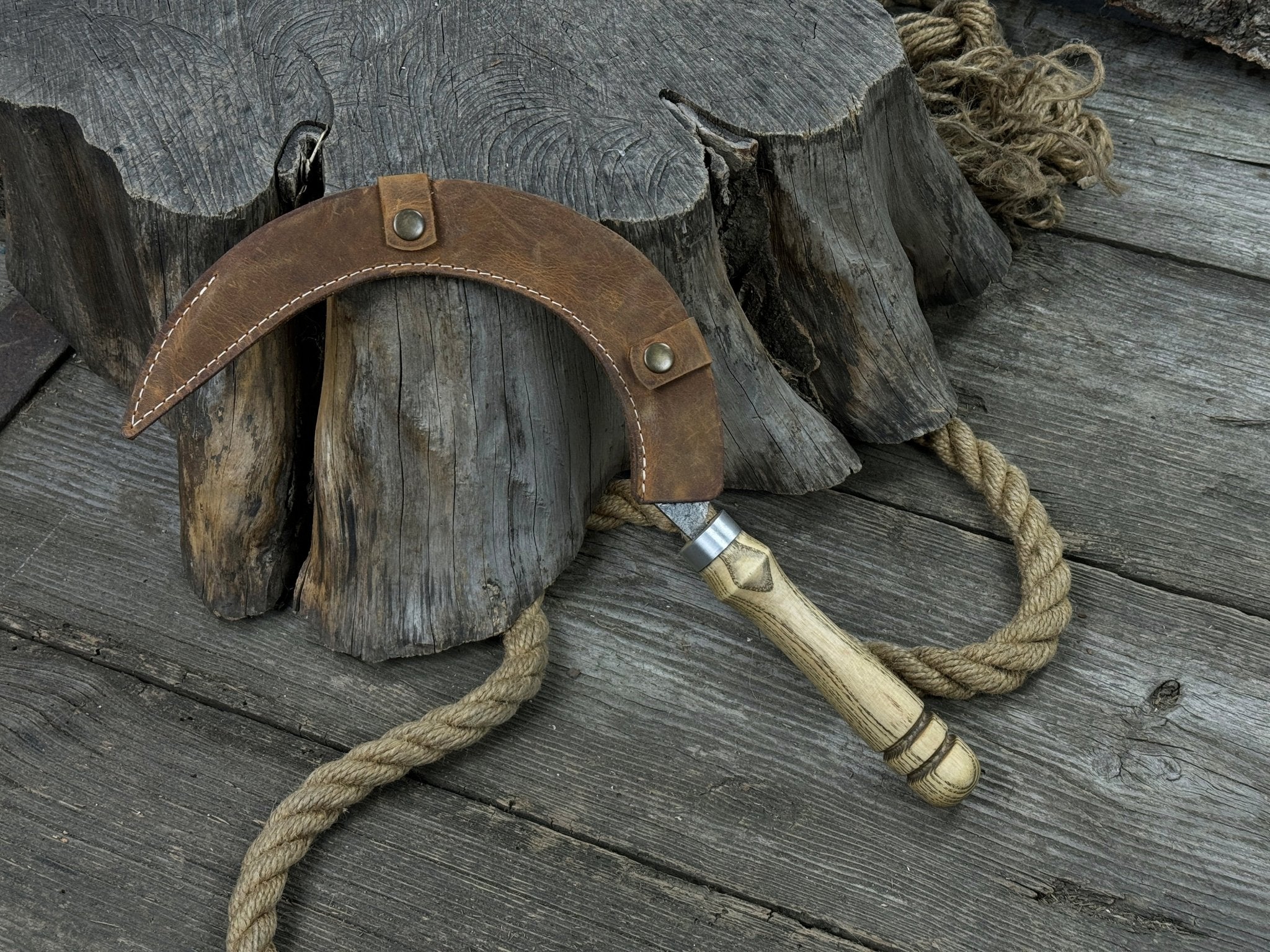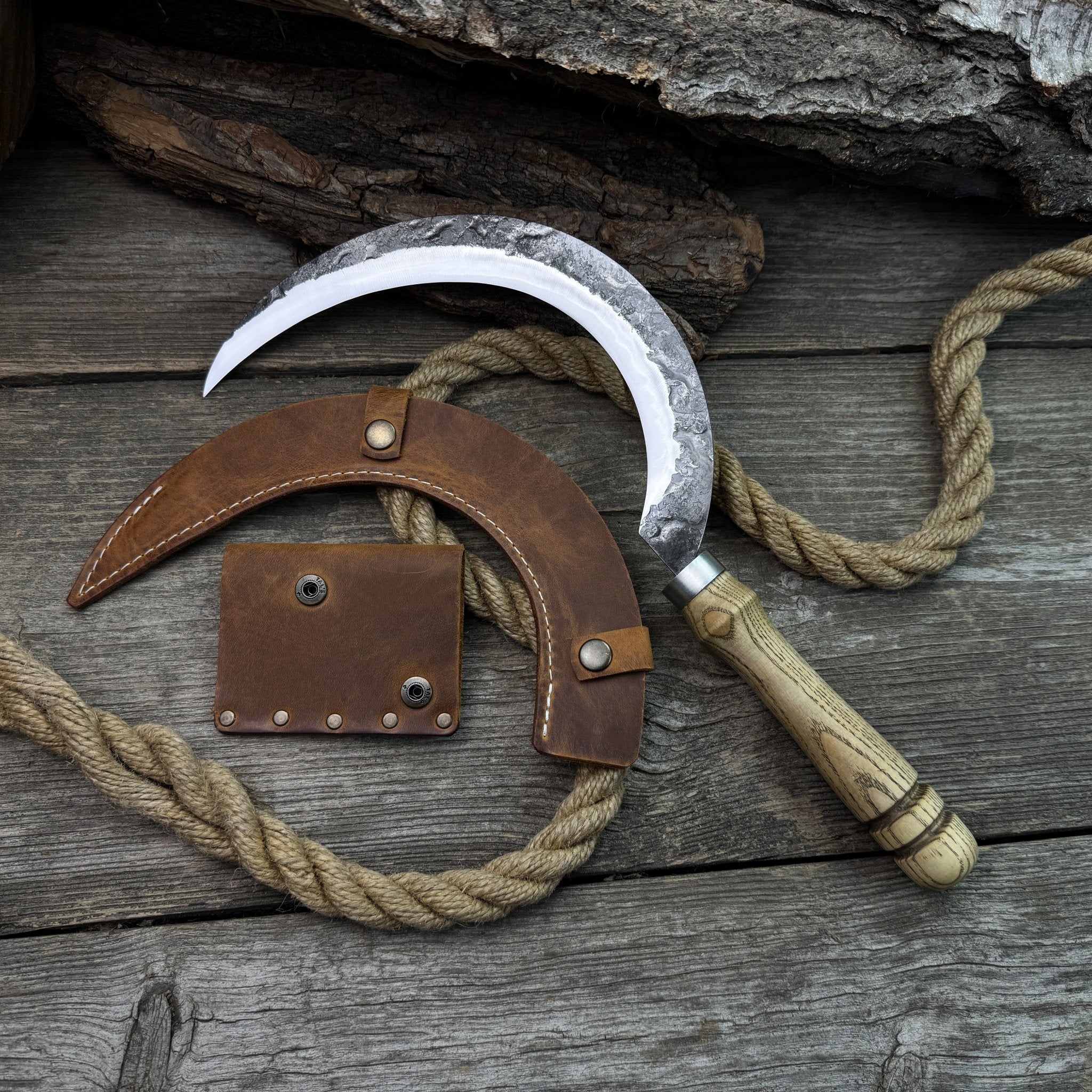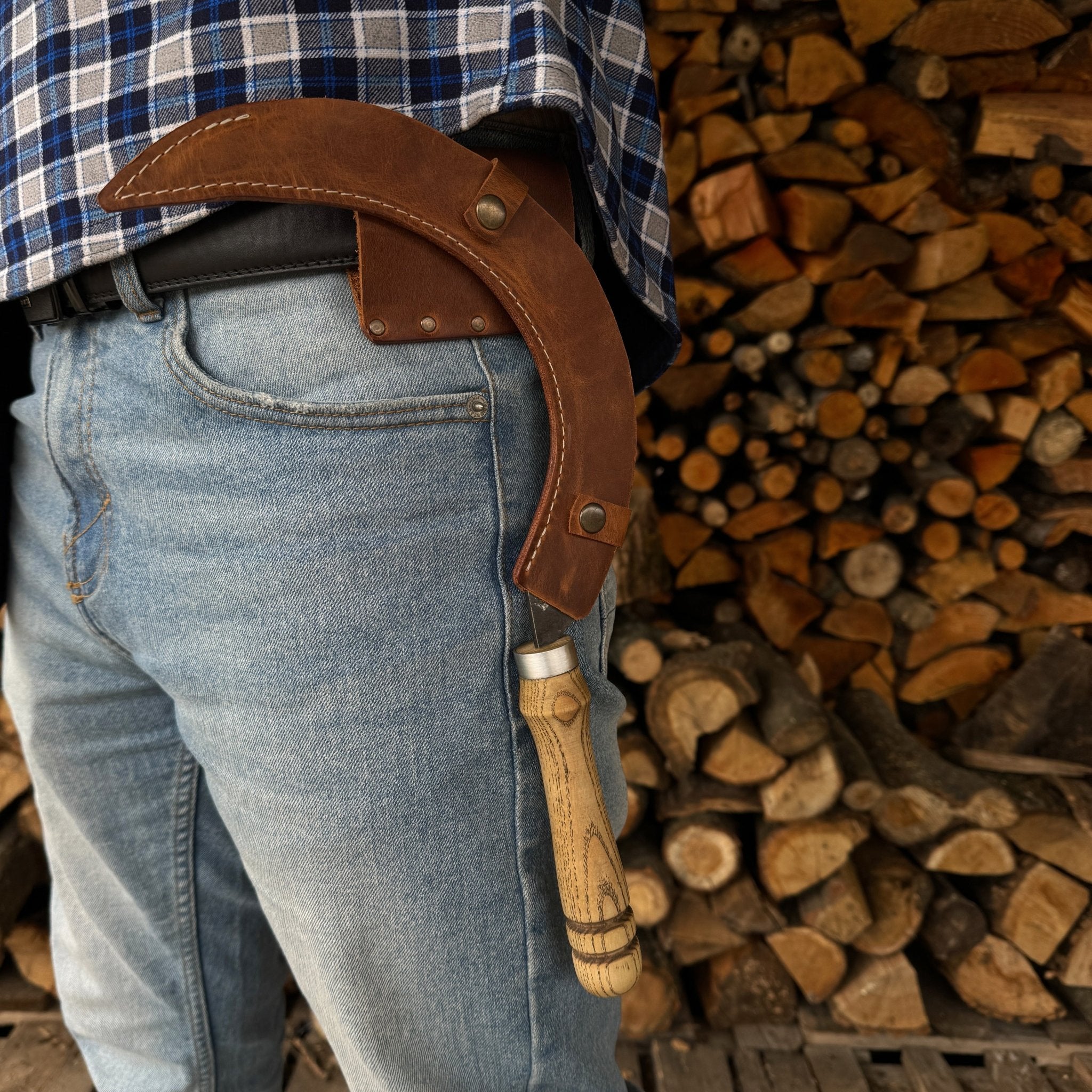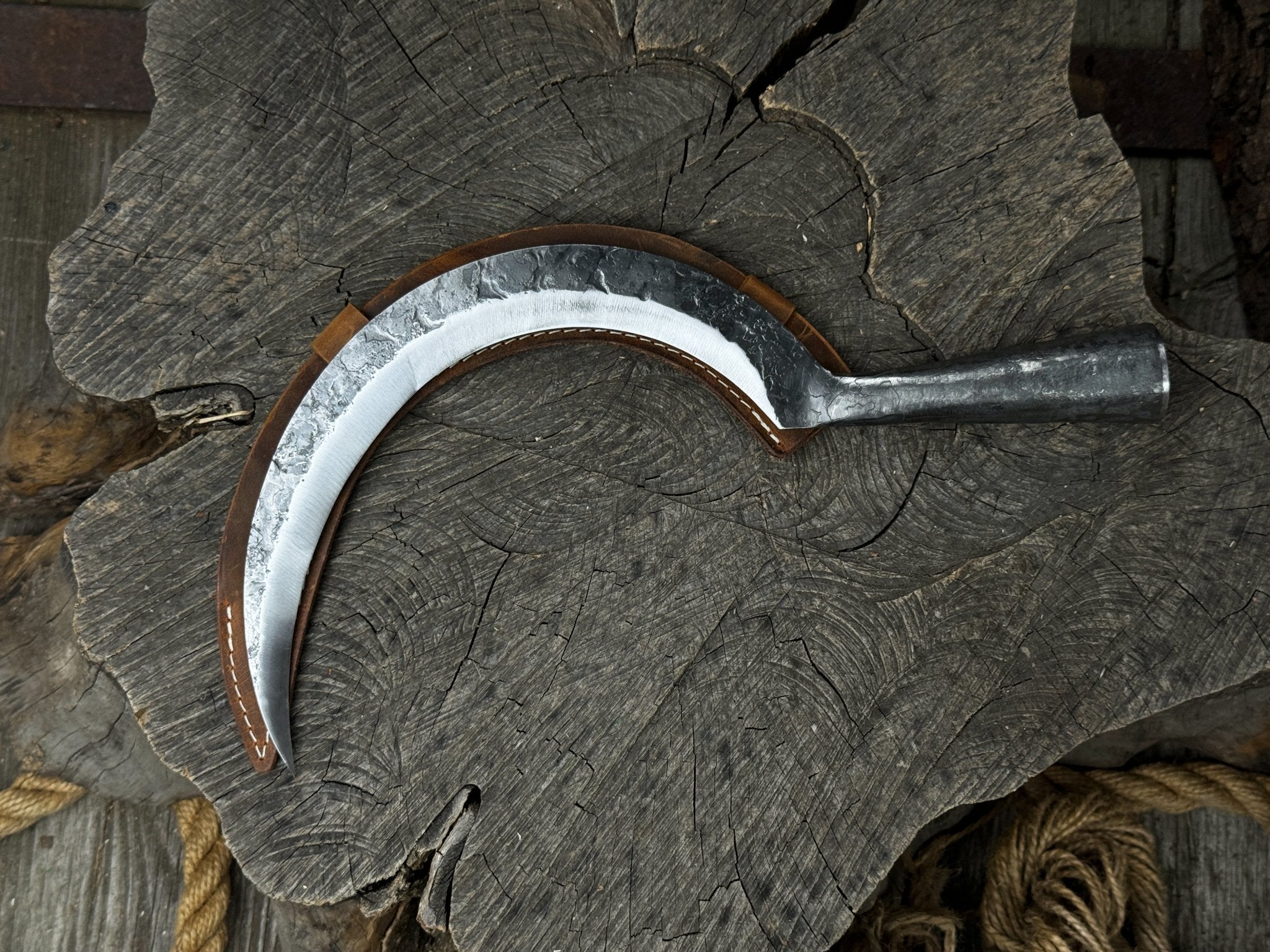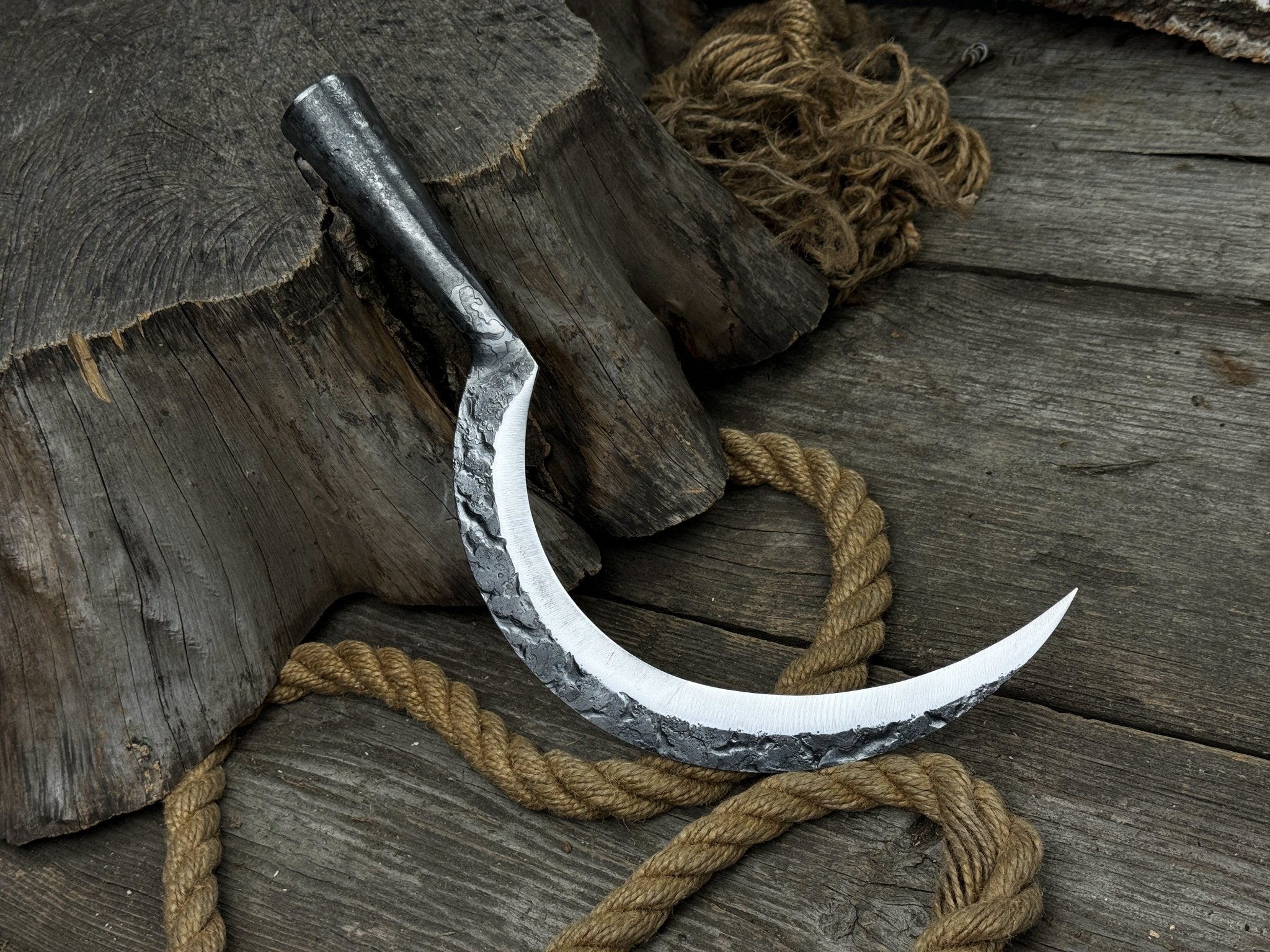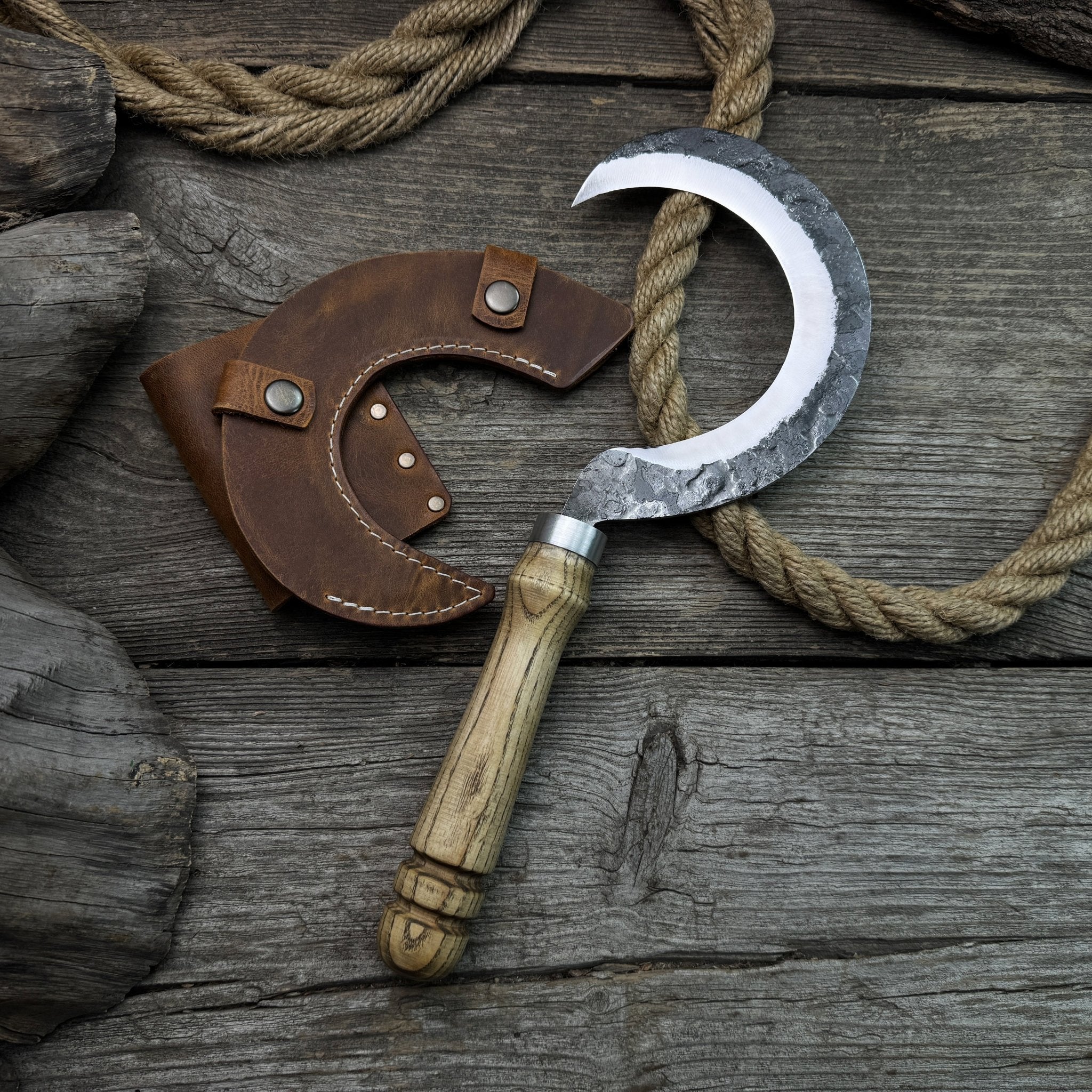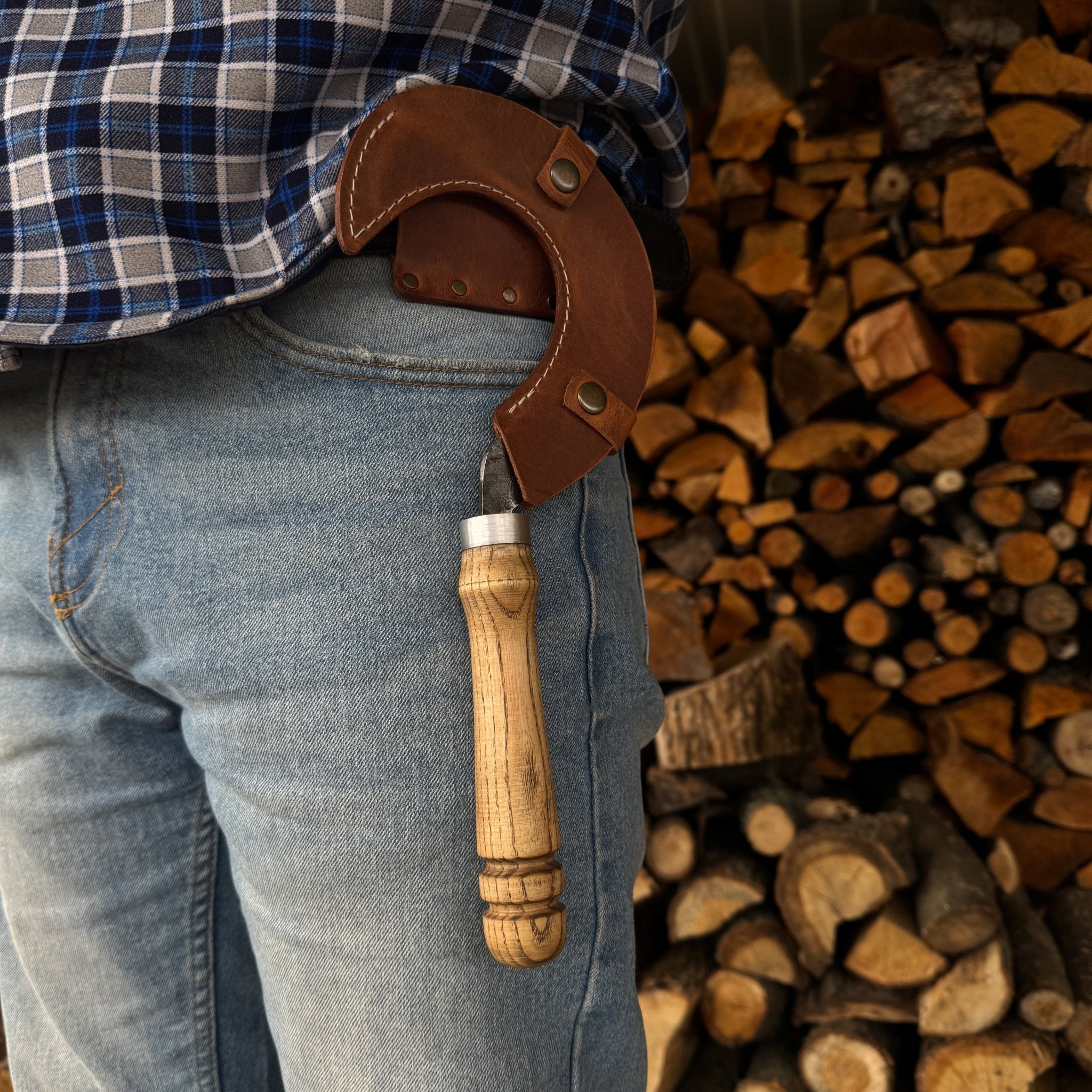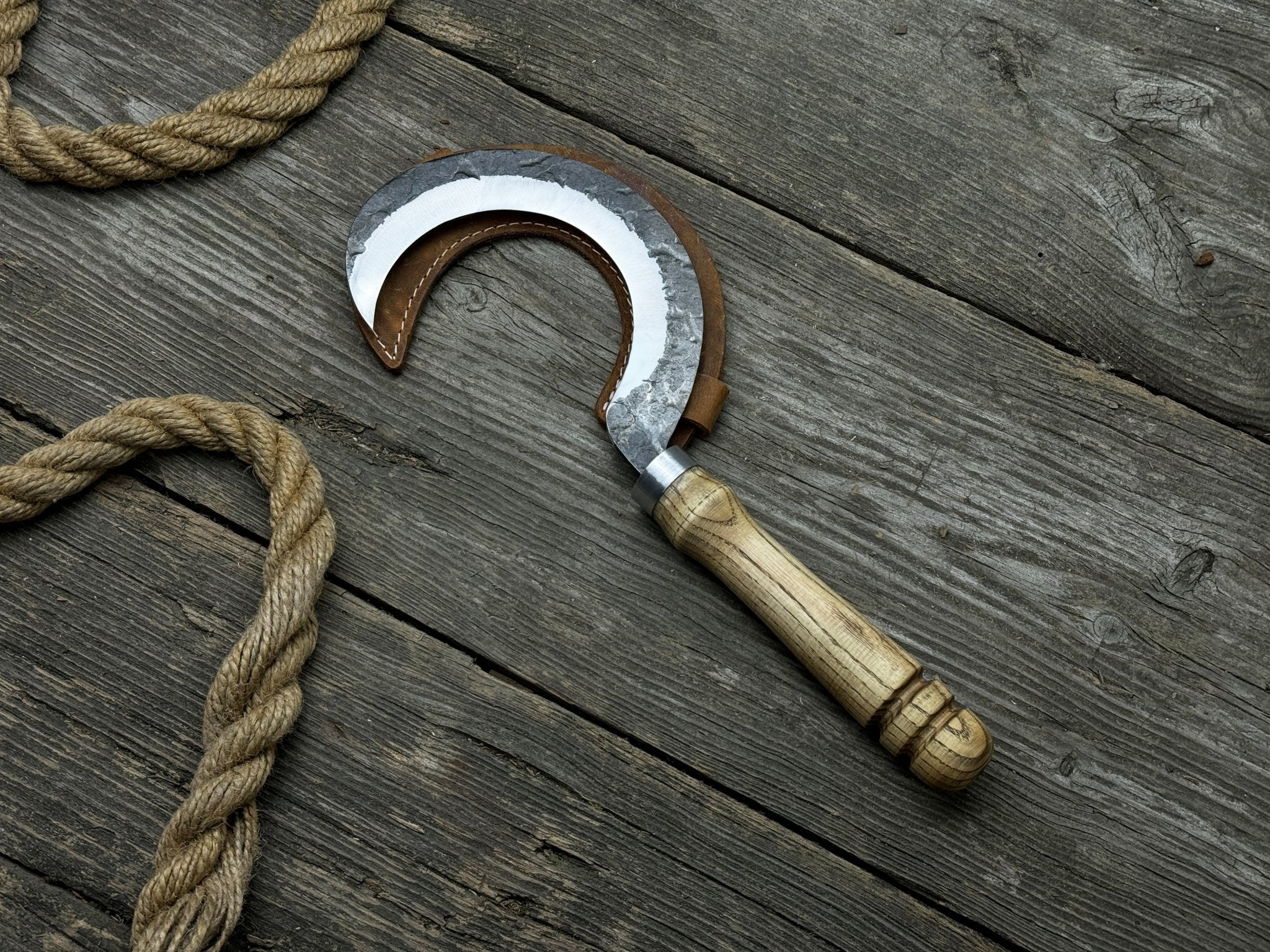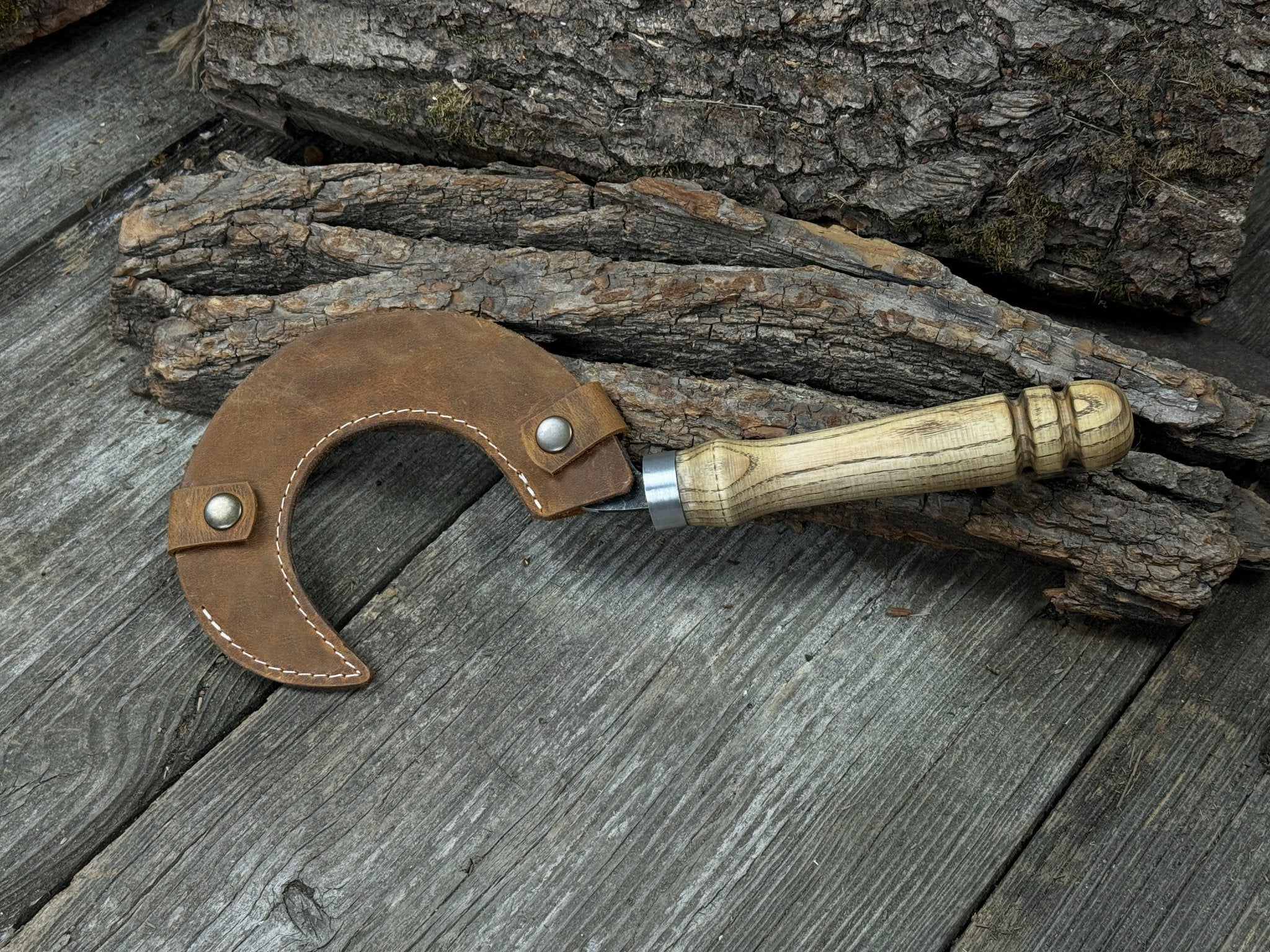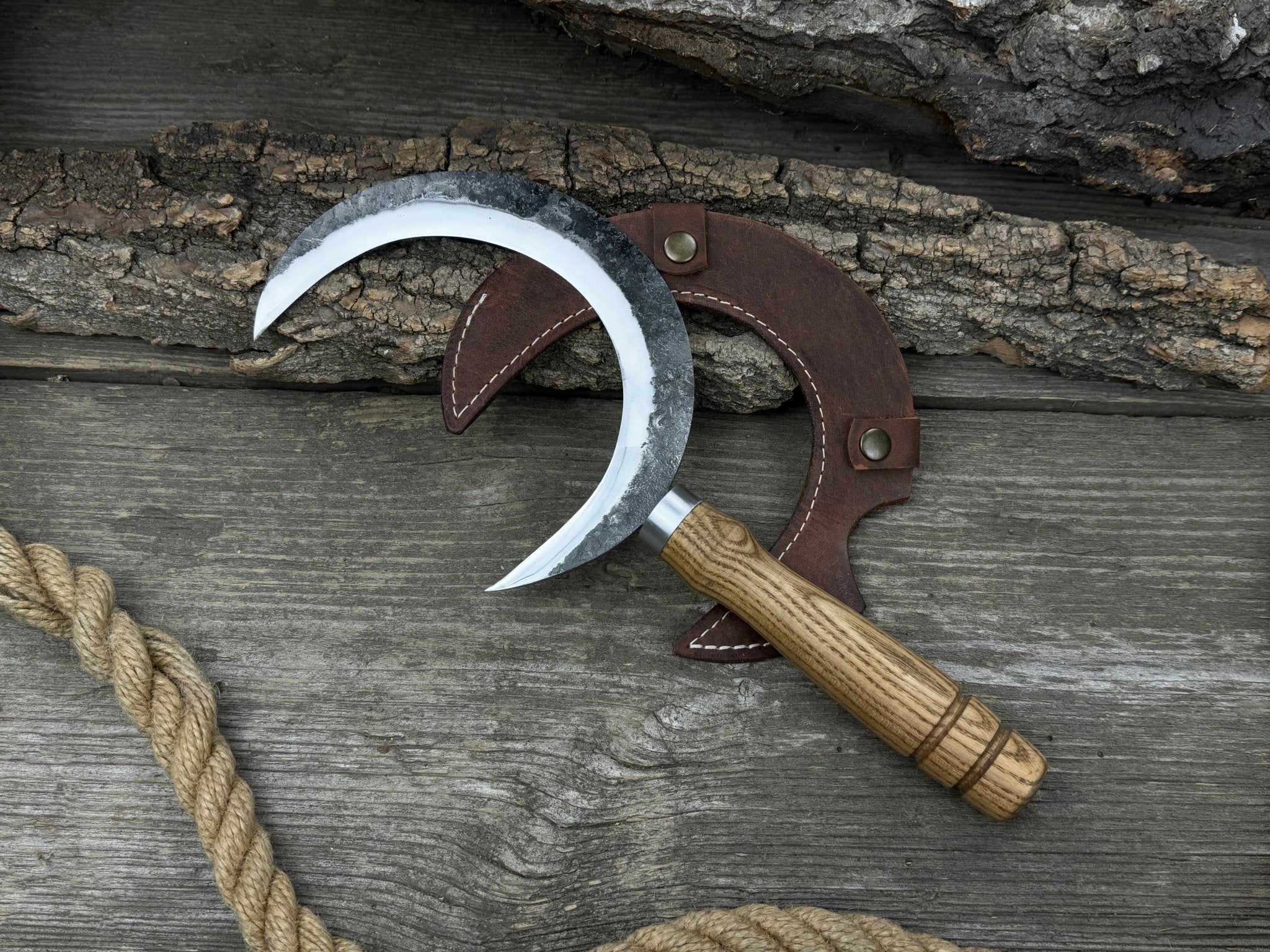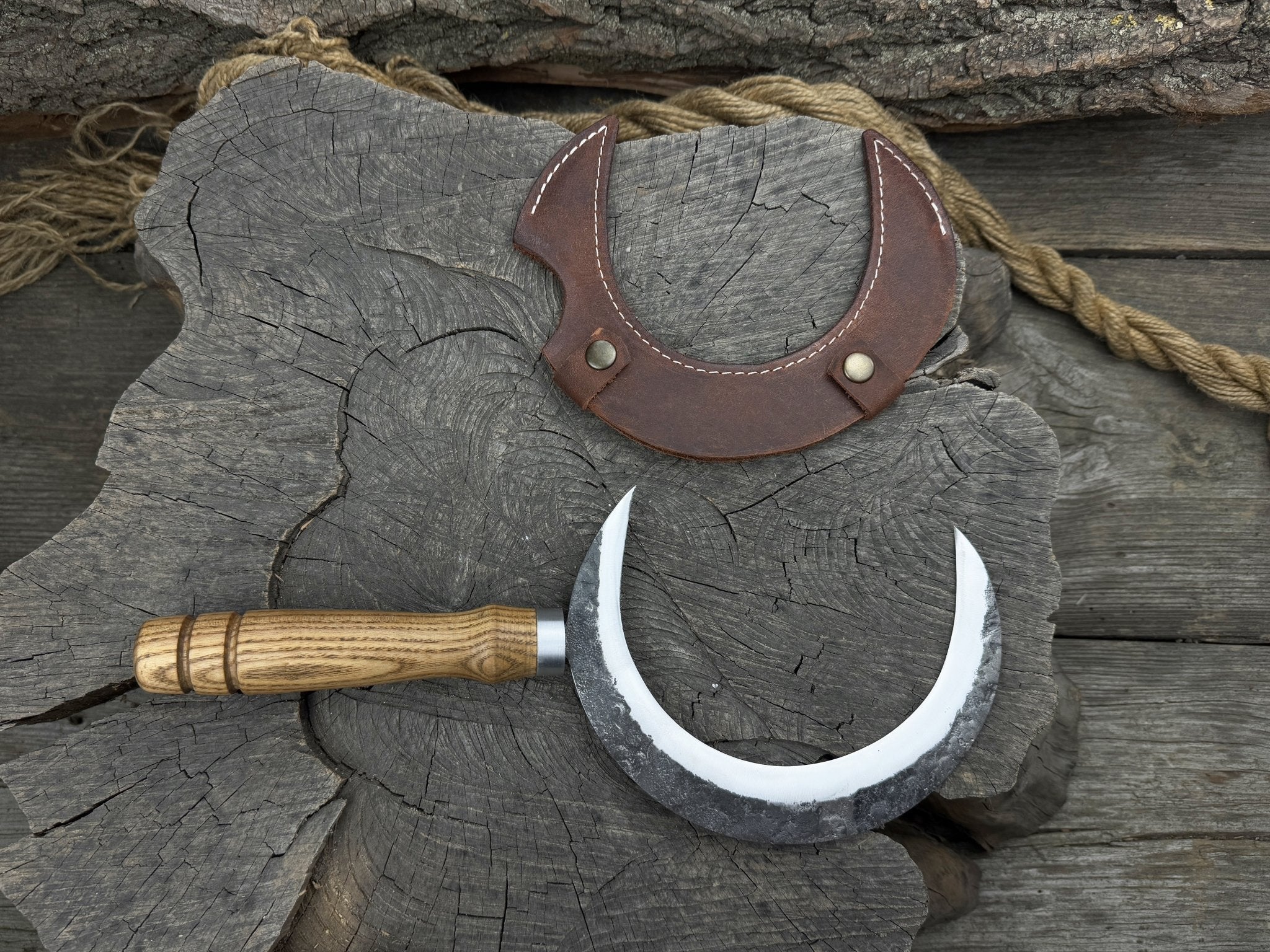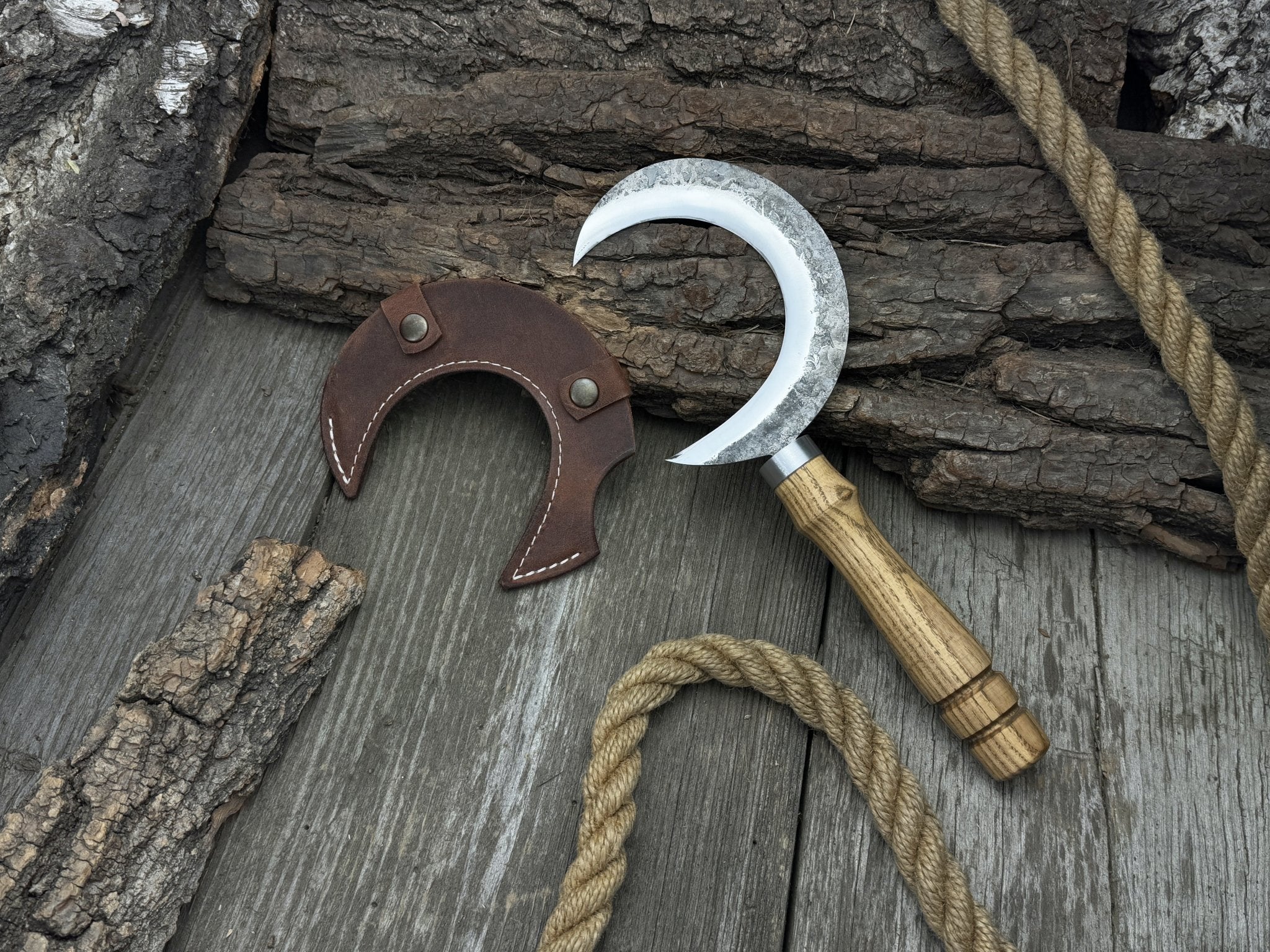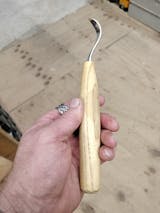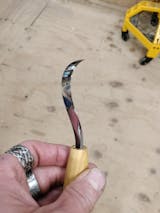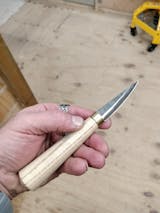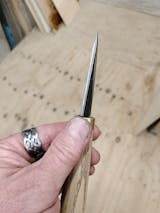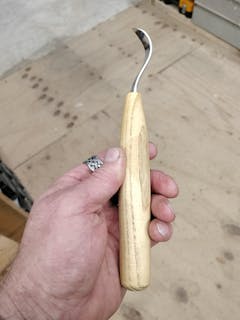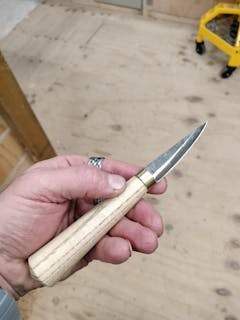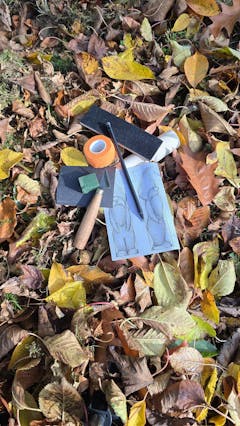Hand-Forged Large Sickle, ⌀19 cm (7.5 inches)
Hand-Forged Large Sickle, ⌀19 cm (7.5 inches) Blade, Leather Belt Attachment
Hand-Forged Large Sickle, ⌀19 cm (7.5 inches)
Hand-Forged Small Sickle – 9 cm (3.54 inches) Blade with Leather Belt Attachment
Hand-Forged Small Sickle, ⌀9 cm (3.54 inches)
Small Sickle with Forged Handle, 9 cm (3.54 inches)

The Versatility of Sickles: A Must-Have Tool for Every Gardener
The history of the sickle blade is closely tied to the development of agriculture, as a farming sickle was widely used hundreds years ago to harvest crops like rice and wheat, cutting grains and hay.
This tool is still in use today. Sickles are highly efficient in rural mountainous areas where farmers gather cut forage for livestock. In addition to harvesting crops, a sickle for gardening can be used for gardening tasks like clearing overgrown areas and trimming weeds. The sickle blades are usually curved and sharpened on the inside edge, allowing for cutting grass and dense vegetation on uneven terrain without damaging plant roots.
In areas where mechanized tools like tractors are impractical or too expensive, hand sickles are still preferred for their simplicity, affordability, and ease of maintenance. This is why modern gardeners extensively use them for trimming, harvesting, and pruning tasks, completing these tasks efficiently and quickly. Sickles are also low-maintenance tools; with proper care, they become a long-term investment for gardeners.
Choosing the Right Sickle for Your Needs
One of the most common types of sickles used today is the harvesting sickle. It’s known for its pronounced, curved blade with a sharp, single-sided, or serrated edge to cut through fibrous materials like grass and stems. Other versions feature smooth edges for cleaner cuts in crops.
The length of the harvesting sickles blades ranges from 6 to 12 inches, making them the right size for better control and accuracy in both tight and broad areas. These agricultural tools are lightweight to make repetitive tasks like harvesting grains easier to handle during long cutting sessions.
Different Types of Sickles: Which One is Best for You?
The selection of the hand sickle is not limited to the traditional grain sickle. Here are several types designed for specific uses:
Grass Sickle
- Blade design: Long, slightly curved blade with a serrated edge.
- Handle design: Longer handles made of wood or plastic for a comfortable grip.
- Main uses: Designed for cutting weeds and grass, trimming lawn edges.
Weeding Sickle
- Blade design: Shorter, more curved blade with a sharp edge for detailed work.
- Handle design: Shorter handles made of wood or plastic for better control.
- Main uses: Ideal for cutting grass close to the ground and around bushes without damaging them.
Brush Sickle
- Blade design: Long, slightly curved blade for cutting through dense vegetation.
- Handle design: Longer handles for better leverage.
- Main uses: Suited for clearing overgrown areas with tall grass, brush, and weeds.
Saw-Tooth Sickle
- Blade design: Featuring saw-like teeth for cutting tough plants.
- Handle design: Varies, usually made of wood or composite materials.
- Main uses: Used for harvesting fibrous plants like rice and mowing.
Hedge Sickle
- Blade design: Long, straight or slightly curved with a serrated edge.
- Handle design: Longer handle for better reach.
- Main uses: Trimming and maintaining hedges and shrubs.
Japanese Kama Sickle
- Blade design: Short and curved, often made of high-carbon steel to provide sharpness and precision.
- Handle design: Short handle for better control.
- Main uses: Weeding, harvesting, and detailed garden work.
Each type of the sickle tool is designed to tackle specific agricultural and gardening tasks, so choosing the right one depends on the tasks you need to accomplish.
Key Features to Look for in a Quality Sickle
Whether you are looking for a farming sickle or a gardening sickle, a number of criteria will help you make the right choice:
- Blade Material: A gardening sickle often features either stainless steel or high-carbon steel blade. High-carbon steel is durable, holds a sharp edge for a long time, and is easy to sharpen. High-carbon blades are particularly good at cutting through tough plants. Stainless steel offers rust resistance but dulls faster.
- Blade Design: Blade design depends on the task a farming sickle was created for. Curved blades are better for cutting dense vegetation, while straight blades are ideal for precise harvesting or trimming. Serrated edges handle fibrous materials well, while smooth edged blades provide controlled cuts for crops like wheat. Shorter blades (6-8 inches) offer more maneuverability, whereas longer blades (10-12 inches) cover larger areas more efficiently.
- Handle Design: Handles made from wood, plastic, or composite materials offer different levels of durability and comfort. Wooden handles provide a natural grip but require more maintenance compared to composite materials.
- Durability: The blade-to-handle connection should be secure for long-lasting efficiency of the sickle for gardening. It can either be attached through a tang construction, where the blade extends into the handle, or with a strong rivet system to withstand heavy use.
- Multi-Purpose Sickles Tool: Multi-purpose hand sickles are beneficial if you want one tool for both light and heavy cutting. If you are searching for versatility, blade shape and material type are key considerations.
- Ease of Maintenance: Maintaining a sharp edge should be straightforward and quick, especially when a sickle farming tool handles heavy-duty tasks.
Matching the Sickle to Your Gardening Style
If you primarily focus on gardening, consider matching your gardening style with the garden sickle types that suit your needs:
Naturalized Gardens
This style imitates natural landscapes, focusing on plant shapes and textures rather than color.
- Types of hand sickles needed: Grass sickles with long, slightly curved blades and longer handles are perfect for managing wide areas of grass and wildflower meadows.
Country Gardens
These gardens feature colorful blooms, wildflowers, and rustic elements.
- Type of a garden sickle needed: A traditional sickle for harvesting small crops and cutting back dense foliage. A weeding sickle will help manage weeds and maintain a tidy garden appearance.
Oriental Gardens
Oriental gardens highlight harmony, balance and tranquility, featuring rocks, bridges, water, and carefully placed plants.
- Type of a sickle gardening tool needed: A Japanese Kama sickle is perfect for weeding, harvesting, and general garden maintenance.
Modern Gardens
Modern gardens emphasize simplicity, geometric shapes, and clean lines.
- Type of a sickles tool needed: A hedge sickle is perfect for trimming hedges and shrubs to ensure clean cuts and an accurate appearance.
How to Properly Use and Maintain Your Sickle
Best Practices for Safe and Efficient Sickle Use
To use a sickle efficiently, maintain a firm but not overly tight grip to control the tool without causing fatigue. Cutting motion should be smooth and at a slight angle for better slicing. Common techniques include:
- Side-to-side swing: Swing the sickle from side to side, close to the ground. It is effective for cutting grass and weeds.
- Pulling motion: Position the sickle parallel to the ground, slightly pushing down as you pull it back towards to cut thicker grass or small shrubs.
- Slicing motion: Move the sickle in a curved path, following the blade’s curve for clean cuts during harvesting crops.
Wear safety gear like heavy-duty gloves and protective eyewear to prevent accidental cuts and debris injuries.
Sickle Maintenance: Keeping Your Tool Sharp and Durable
To keep a sickle blade sharp:
- Remove rust: Use sandpaper to remove surface rust from the hand sickle. Manual sanding will be sufficient if the rust is minimal. Clean the blade after removing the rust.
- File the blade: You may use wet stones of varying grits for that. Start with the coarse stone to sharpen the blade edge, and proceed to finer ones for polishing. Maintain a consistent 30-degree angle while sharpening.
- Polish and hone: To add a shiny and polished look to the blade, use a ceramic stone for final polishing at a consistent angle and clean the blade after honing.
Store sickles with a blade guard or sheath in a dry place to ensure durability of the tool.
Common Mistakes to Avoid When Using a Sickle
When you start using a sickle, try to avoid making these common mistakes:
- Neglecting regular maintenance, which can lead to dull blades and higher injury risk.
- Applying excessive force, which can cause injuries. Instead, use sharp tools and practice smooth slicing motions.
- Improper grain sickle grip: Holding the tool too tightly causes strain.
- Ignoring safety by not wearing protective gear, leading to cuts and injuries.
Why Buy Your Sickle from Us?
If you know what type of sickle you need, consider hand-forged sickles from Sharky Forged Steel Tools™. With years of experience in manufacturing, we offer a range of hand forged gardening sickles with blades of varying diameters, lengths, and thicknesses to suit your needs.
Our sickles are made from 52100 carbon steel (ASTM A295 standard), with a hardness of 59/62 HRC, ensuring the blade stays sharp for a long time. Carbon steel is easy to sharpen and maintain, making it a valuable investment for gardening or farming.
The average weight of our sickles ranges from 170 g (5.9 oz) to 210 g (7.4 oz). The handles are made from ash wood, chosen for its durability, lightweight nature, and comfort.
When you buy from us, you can be assured of tool quality, track your shipping, and exchange tools if needed. You can also contact us via our Contact form or support email for any inquiries. By choosing Sharky Forged Steel Tools™, you are investing in a durable, long-lasting product!
